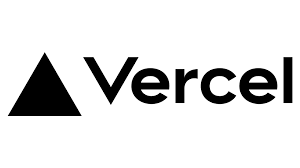Deploy the website for the personal blog, portfolio, or open-source project, and modern development workflows have good free options available. These five deployment platforms are popular nowadays. We evaluate their advantages and disadvantages, look into some recent research on the internet, and suggest tips for users.
Overview
GitHub Pages has long been a favorite of static hosting sites. It allows you to publish the contents from your repository directly via an integration with Git repositories and Jekyll, a static site generator. Pages work particularly well for personal projects and documentation.
Key Features
- Free Hosting for Public Repositories: The hosting is free for open-source projects.
- Custom Domains and HTTPS: It is easy to set up for custom domains with auto-SSL.
- Jekyll Integration: Converting Markdown to HTML is never easier!
- Git-based Simple Workflow: Just push the changes, and GitHub rebuilds your site automatically.
Community & Research Insight
Recent talk on GitHub forums and in the broader DEV community shows that GitHub Pages have gained a lot of publicity for being simple and easy to use. User feedback, however, mentions that deploying single-page applications or non-Jekyll static sites could be finicky and may need tweaks like adding a .nojekyll file for deployment.
Deployment on Windows + CMD
The workflow remains very simple for Windows users. Open CMD, navigate to your repository folder, and use Git commands like:
git add .
git commit -m “Update site content”
git push
GitHub Pages detects changes and rebuilds your site automatically.
Overview
GitLab Pages gives almost the same static hosting that GitHub Pages gives, with the additional benefit of integrated CI/CD pipelines. It is an excellent option if you keep your code on GitLab.
Key Features
- Integrated CI/CD: Automatically builds and deploys with GitLab pipelines.
- Flexibility: It supports various other static site generators apart from Jekyll.
- Free for Public Projects: Open-source content incurs no extra charge.
- Custom domains: Configurable with HTTPS.
Community & Research Insight
Users appreciate GitLab Pages for its flexibility, along with the built-in support for pipelines. Recent research highlighted that they work really well for multi-language projects, with a smooth transition if you are already in the GitLab workflow.”
Deployment on Windows + CMD
Use your CMD window to push changes just like with GitHub Pages:
git add .
git commit -m “Update static site”
git push
Your GitLab CI/CD pipeline then builds and deploys the site.
Overview
Today, Netlify has made its way into the list of most used sites wherein developers are deploying the modern static sites as well as their JAMstack counterparts. This was all made possible due to the ease of integration with highly functional tools on an interface that would be helpful not just for professionals but also for the novice developer.
Key Features
- Continuous Deployment: Connect your Git repository, and Netlify rebuilds your entire site whenever there’s a push.
- Serverless Functions: It is convenient to extend the functionality without having to manage a separate backend.
- Edge CDN & Custom Domains: You get fast global delivery automatic HTTPS.
- Deploy Previews and Form Handling: Best suited when you are developing iteratively and in hastily seeking feedback.
Community & Research Insights
A recent blog post on refine.dev reports that Netlify is particularly favored for hobby projects because of its very generous free tier – along with other advanced features such as deploy previews. Its intuitive dashboard and the powerful integrations are touted by users as well.
Once you’ve set up your Git integration on Netlify’s dashboard, you’re free to use CMD to manage your repositories:
git add .
git commit -m “Netlify deployment update”
git push
Your push will automatically trigger a new build and deployment on Netlify.
Overview
Vercel is built entirely for today’s JavaScript frameworks most notably Next.js. Furthermore, it supports static and dynamic deployment through serverless functions. This is one reason why it caters to the taste of most frontend developers because of developer experience and performance.
Key Features
- Optimized for Next.js & Modern Frameworks: Works seamlessly with popular tools.
- Global CDN & Instant Rollbacks: Fast and reliable loading times.
- Serverless Functions: Run backend logic without server management.
- Collaborative Previews: Get instant deploy previews for pull requests and iterations.
Community & Research Insights
Recent comparisons (for example, from Kapstan.io’s comparative reviews) detail that Vercel is cut above the rest in speed and ease of use. Developers rave about its interactive Git integration and the global benefits that come with it; however, some attribute the limitation of serverless functions like cold starts to this too.
Deployment on Windows + CMD
git add .
git commit -m “Deploy update via Vercel”
git push
Your connected repository automatically deploys to Vercel with each push.

Overview
Surge.sh is an extremely simple solution to publish static websites. Their no-fuss approach allows you to deploy straight from the command line with a single command, making it a favorite for rapid prototypes and small projects.
Key Features
- Deploy with One Command: Insta-deploy a folder.
- Custom Domains & HTTPS: Supports custom URLs.
- Lightweight & Fast: Light configuration with all the necessary features provided by CDNs.
- Exclusive Command-Line Interface Workflows: For developers who cherish a command-line environment against all odds.
Community & Research Insights
- Surge is widely talked about in forums and Reddit for being lightweight and fast. Developers love the lack of overhead, but also recognize that it comes short on advanced features when compared to Netlify or Vercel.
Deployment on Windows + CMD
With Node.js loaded on Windows, call up CMD, navigate to your project folder, and type:
surge . your-custom-site.surge.sh
This single command deploys your site directly to Surge’s CDN.
Additional Research & Considerations
Performance & Limitations
- Build Minutes and Cold Starts: Free tiers on Netlify and Vercel limits pose minimal threat. Think about a project’s needs before committing.
- Static vs. Dynamic Needs: While GitHub and GitLab Pages work pretty well for all pure static content, Netlify and Vercel are a lot more flexible for dynamic functionalities via serverless functions.
- Routing and Single Page Applications: Are a problem with GitHub Pages some users pointed out that additional configuration will be needed (redirect all URLs to index.html), which has also been discussed in Elm community.
Community Feedback
- Simplicity vs. Features: GitHub Pages and GitLab Pages are praised for their ease of use, thus quite appropriate for a novice or small-type of project. Nevertheless, in contrast, Netlify and Vercel provide enough to handle complex, dynamic site features.
- Developer Experience: While Vercel often gets highly rated for developer-friendly workflow and real time collaboration points, Surge still seems to be very popular among those favoring minimalism and a CLI-centric approach.
- Ecosystem & Integrations: Research shows that many of these platforms are constantly evolving; for example, the rich ecosystem for plugins offered by Netlify and instant rollbacks for Vercel directly improve productivity.
Scalability & Use Cases
- Personal & Hobby Projects: GitHub Pages and GitLab Pages are fantastic options for personal blogs, documentation, and project portfolios.
- Modern Web Apps: Scalable hosting solutions with serverless backends for startup and dynamic sites with Netlify and Vercel.
- Rapid Prototyping: Unparalleled speed by Surge in testing out ideas without configurations that weigh heavy.
Use Cases & Scalability
- Personal or Hobby Sites: GitHub Pages and GitLab Pages are free options for personal blogs, documentation, or project portfolio-hosting sites.
- Modern Web Application: For scalable serverless back-end solutions with applications like start-ups or dynamic sites, Netlify and Vercel have excellent offerings.
- Rapid Prototyping: With Surge, speed exceeds that of any other solution in market towards idea testing without a weighty configuration overhead.
Conclusion
There is no one switch-key for free website deployment. Make your choice of service according to what the projects demand- whether you need something very simple, fairly dynamic, or an extensive continuous deployment pipeline.
GitHub and GitLab Pages are perfect for static content and documentation.
Netlify is full of powerful features and integrates seamlessly.
Optimized for the modern, JavaScript-driven web application, Vercel is definitely the go-to tool.
Surge.sh is a simple, quick and easy deployment to serve basic sites.
By weighing the performance considerations and community insights outlined above, you can make your choice on the platform which would suit your development workflow. Any questions or extra suggestions about it? Drop a comment below and join the discussion!
Happy deploying!



